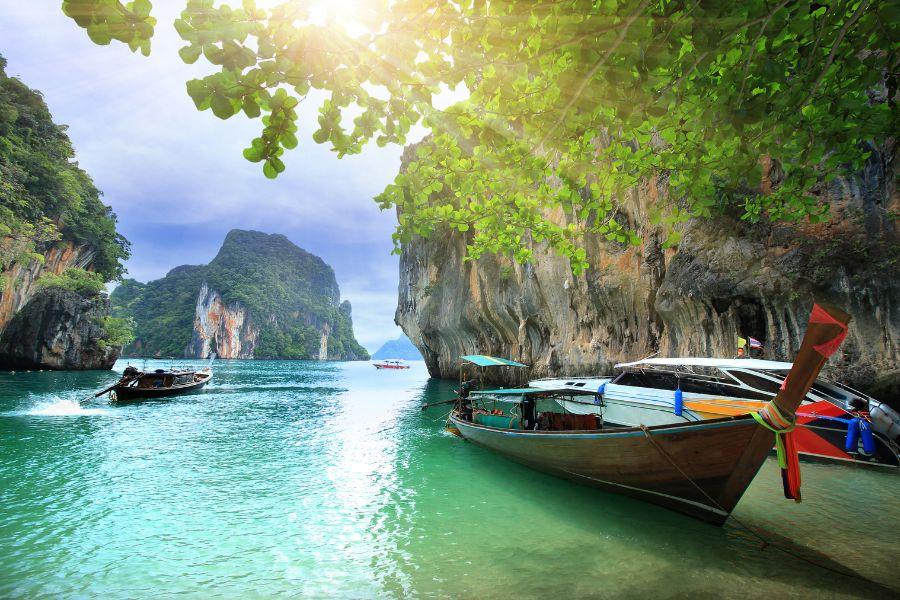Traveling between Koh Lipe and Ao Nang offers a scenic journey across the Andaman Sea, connecting two of southern Thailand’s most beautiful coastal regions. However, the timing of your trip can significantly affect travel comfort, safety, and convenience. Understanding seasonal weather patterns and ferry operations is essential for planning a smooth and enjoyable journey.
High Season (November to April): The Ideal Travel Window
The high season, stretching from November to April, is widely considered the best time to travel from Koh Lipe to Ao Nang.
During these months, the weather is typically dry, sunny, and calm, providing optimal sea conditions for ferries and speedboats.
Why Travel During This Period
- Calm seas and mild temperatures: Ideal for smooth ferry crossings and comfortable land transfers.
- Reliable ferry schedules: Direct routes between Koh Lipe, Koh Lanta, and Ao Nang operate regularly.
- Best visibility for island scenery: Clear skies enhance views of the Andaman coastline.
- Peak months: November to February offer the most pleasant temperatures, averaging 25°C to 30°C.
Typical Route and Travel Duration
Most travelers journey via Koh Lanta or Pak Bara Pier, with connections continuing to Ao Nang or Krabi Town.
- Travel time: Approximately 5.5 to 8 hours, depending on ferry connections and waiting times.
- Fares: Expect to pay between THB 1,200–1,800 for standard ferry or speedboat combinations.
- Convenience: Many operators provide combo tickets that include boat and van transfers directly to Ao Nang hotels.
Low Season (May to October): Monsoon Challenges
From May to October, Thailand’s southwest monsoon season brings heavy rainfall, strong winds, and rough sea conditions.
As a result, ferry services between Koh Lipe and Ao Nang are reduced or suspended, and travel may require multiple transfers.
What to Expect During Low Season
- Fewer ferry routes: Some direct services are halted; alternative routes involve Pak Bara Pier with onward land transport to Krabi or Ao Nang.
- Increased travel time: Depending on weather and connections, journeys can extend to 8–10 hours or more.
- Safety considerations: Rougher seas may cause cancellations or delays.
- Higher costs for private transfers: When ferries are unavailable, private van or taxi transfers may cost THB 2,000–3,000 depending on distance.
Tips for Off-Season Travelers
- Check ferry schedules a few days before departure, as operations depend on weather forecasts.
- Consider travel insurance covering cancellations due to weather disruptions.
- If flexibility is possible, plan your inter-island journey around weather windows when conditions are stable.
Travel Planning Tips
- Book early during peak months (Dec–Feb): Ferries and accommodations fill up quickly.
- Stay overnight in Koh Lanta or Pak Bara: If connections are long, breaking the trip ensures comfort.
- Monitor marine weather forecasts: Reliable updates are available through Thai Meteorological Department bulletins.
- Carry motion sickness medication: Even in the dry season, occasional swells can occur on longer routes.
Conclusion
The best time to travel from Koh Lipe to Ao Nang is undoubtedly between November and April, particularly November to February for calm seas and reliable connections.
Traveling during the monsoon months (May–October) is possible but far less predictable, often requiring longer, more complicated routes. Careful planning and schedule checks are essential for a safe and efficient trip across southern Thailand’s Andaman coast.
FAQs: Traveling from Koh Lipe to Ao Nang
1. What months offer the smoothest ferry crossings from Koh Lipe to Ao Nang?
November to February provide the calmest seas and most reliable ferry operations, ideal for comfortable travel.
2. Are there direct ferries between Koh Lipe and Ao Nang year-round?
No. Direct ferries operate mainly in the high season (November–April). During the monsoon months, travelers must transfer via Koh Lanta or Pak Bara.
3. How long does it take to travel from Koh Lipe to Ao Nang?
Depending on the route, the total travel time ranges between 5.5 and 8 hours, including connections.
4. What are the typical ticket prices for this route?
Standard ferry or speedboat combinations cost about THB 1,200–1,800, depending on the season and operator.
5. Is travel possible during the monsoon season?
Yes, but routes may be disrupted. Travelers often combine speedboat + van transfers via Pak Bara Pier or Trang.
6. What is the safest way to travel during rough weather?
Choose larger ferries over smaller speedboats, and avoid travel on days with official storm warnings.
7. How can travelers check updated ferry schedules?
Schedules are posted by ferry companies and local piers such as Bundhaya Speed Boat and Satun Pakbara Speed Boat Club; checking one to two days in advance is recommended.
8. Are combo tickets worth purchasing?
Yes. Combo tickets covering boat + van transfer save time and simplify coordination, especially for Ao Nang-bound travelers.
9. Can private transfers be arranged from Pak Bara to Ao Nang?
Yes. Private minivan or taxi transfers are available, costing about THB 2,000–3,000 depending on route and season.
10. What is the best way to ensure smooth travel planning?
Book early in the high season, verify schedules directly with ferry operators, and plan around favorable weather periods.
For a Complete Travel Guide
For more detailed information on transportation options, booking tips, itinerary suggestions, and everything you need to know about planning your trip, visit our full guide:
